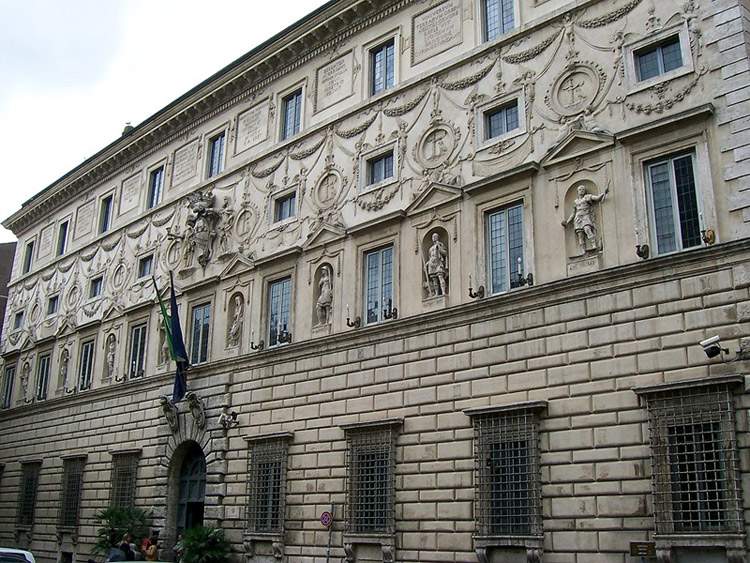There comes an “earful” from the Council of State on the plan for free admission to state museums announced in mid-September by Minister Alberto Bonisoli. The Ministry of Cultural Heritage has in fact sent to the administrative justice body the outline of the regulation of the free-of-charge plan, but there are many points on which Palazzo Spada had to make comments, finally asking MiBAC to provide further elements and the requested clarifications. According to the Council of State, MiBAC on the objectives was not sufficiently clear, on the criteria for choosing free days in individual museums it did not identify the criteria for the directors, regarding the estimate on new revenues the simulations are not complete, and in the reports on the effects of the measure MiBAC did not provide data.
The Council of State opinion first states that “the objectives of the planned changes do not appear to be sufficiently clear, nor do they appear to be adequately defined in terms of how they will be achieved. In particular, it does not emerge clearly whether the priority objective is to reduce the costs of the measure, or that of greater flexibility of the offer of free admission, or that of ensuring the best management of the flow of users also to protect cultural heritage.” The judges of Palazzo Spada then ask MiBAC to clearly define “the choices made and the way in which the related objectives were achieved,” making them explicit in the reports that will accompany the decree.
Still, with regard to the eight free days decided by individual directors, the Council of State notes that “the criteria and modalities on the basis of which the directors of the regional museum poles, and with reference to museums and institutes with special autonomy, the directors of the same, can reach an agreement with the Directorate General to which the institute or place of culture belongs, nor are the procedures to be followed in the event of failure to reach an agreement between the aforementioned parties defined.” In this case, the request of Palazzo Spada is to define the criteria that will have to guide museum directors in the choice of free days. In addition, the Council of State also provides some suggestions to MiBAC: “it also seems appropriate to provide procedures or methods of coordination with local authorities, often also owners of museums and institutions of public use, in order to achieve a fair collaboration in the promotion of cultural heritage insisting on the territory. Without neglecting that even the choice of days or time slots should take into account the reality of local situations (e.g. patron saint festivals, special events etc.) as well as the trend of tourist flows and any logistical problems (peak times, traffic flows, concomitance with fairs and markets etc.) data all known to local authorities.”
With regard to the financial benefits of the measure, which MiBAC has estimated in higher revenues of more than five million euros (to be exact, the simulation speaks of 5,353,930.26 more in the ministerial coffers), according to the Council of State, MiBAC “has provided tables, not accompanied by explanatory elements,” and notes that “for the purposes of the correct appreciation of the data indicated it is necessary that the Administration provide a more complete description of the data used in the simulation of the financial impact of the remodulation of the days of free admission. In particular, it needs to clarify what data was used for the estimates for 2019 (number of paying visitors, gross revenue, percentage of incidence of visitors on free admission days); moreover, in the assumption that it is final data collected with reference to each month, it should be specified whether an average of final data from several years or that of the last year was used.”
Again, on the positive effects of the measure, the MiBAC report states that the increase from 12 to 19 (or 20) days of free access was proposed “on the basis of the positive effects of the changes that took place in the years 2014 and 2016, both in terms of accesses and revenues.” However, Palazzo Spada notes that “regarding these positive effects, the Administration does not provide data, which would instead be useful for the purpose of assessing the scope of the proposed changes, considering also that the significance of the simulations presented is based on thelipothesis that the results in terms of revenues and visitors recorded with the measures in force today will not vary as a result of the new measures planned.”
Lastly, the Council of State notes that “the decree should be supplemented with the provision of monitoring tools aimed at verifying its lidity to concretely pursue the objectives envisaged by the law and pursued through the proposed amendments,” and it is necessary for the ministry “to carry out an assessment of the achievement of the purposes of the aforementioned provisions and on the effects produced on the various stakeholders (citizens, public Administrations, possibly businesses) by the end of next year.”
Pictured: Palazzo Spada, seat of the Council of State. Credit
 |
| Free days at museums, Council of State grooms Bonisoli plan: 'Unclear, define objectives and selection criteria' |
Warning: the translation into English of the original Italian article was created using automatic tools. We undertake to review all articles, but we do not guarantee the total absence of inaccuracies in the translation due to the program. You can find the original by clicking on the ITA button. If you find any mistake,please contact us.